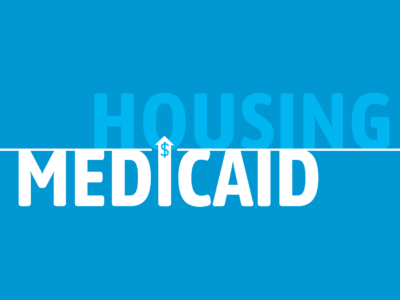Our Aim
By 2026, targeted states and cities will have a formal role in resolving and preventing homelessness, and federal grants and contracts will define success as reducing the number of people experiencing homelessness. Importantly, others will hold political leaders accountable for reducing homelessness, too.
The media and public narrative will reinforce the message that homelessness is solvable and a systems problem. A critical mass of communities of all types — and in particular, large cities — will be measurably reducing homelessness, and this proof that homelessness is solvable will be well documented and widely shared. Through targeted communications, an expanded network of influencers and active citizens will hold leaders accountable for progress.
Our Approach
We are changing expectations at the federal, state, regional, and municipal levels.
Right now, communities that focus on reducing overall homelessness collect by-name data and implement a command-center model do so voluntarily. It’s time that accountability for reducing homelessness becomes the norm. Community Solutions is working with targeted communities to test new ways of aligning key civic actors at every level to broaden commitment and accountability for reducing homelessness.
Achieving and sustaining a new normal where homelessness is rare and brief requires a broad understanding of the solutions and accountability for implementing them.
As our work has progressed, we are finding that people want to believe homelessness is solvable, but have little faith in their civic and government leaders.
In addition, large cities not only have the largest number of people experiencing homelessness but also have an outsized impact on the national discourse on homelessness. In 2024, we will work with a group of large cities to shift local messaging, educate targeted groups, and enlist a broader network of partners in building the expectation that homelessness is solvable.
Progress
The myth that homelessness is an intractable problem has prolonged the suffering of people experiencing homelessness and perpetuated the status quo for far too long. We need a new story that raises our collective expectations of what can and must be done.
Community Solutions has begun to implement local campaigns in targeted large cities to establish a new level of public and media accountability for a measurable and equitable end to homelessness. We will measure success by tracking the local discourse around homelessness in these places and positive shifts in the conversation, as well as by spreading and amplifying the local stories of progress nationally.
The news media frequently reports on homelessness as an ever-worsening crisis. Over the past two years, we have focused on sharing stories of progress and bright spots in Built for Zero communities and beyond. A larger percentage of news stories now focus on solutions and progress than ever before. Stories focused on solutions to homelessness went from 10% to now 21% of stories in the news media.
In addition, stories of solutions and progress on social media have increased from 16% to nearly 40%.
Challenges and Learning
Communities could benefit from more intentional messaging and media support.
Homelessness is too often seen as an individual moral failure rather than a failure of housing and other social systems.
A third of communities interviewed by ORS Impact cited public misperceptions as a major barrier to pursuing proactive, human-centered solutions. Homelessness is too often seen as an individual moral failure rather than a failure of housing and other social systems. These beliefs make it harder for communities to advance solutions that work for each individual and the community as a whole.
Communities are keenly aware of the need to influence public perceptions of homelessness but typically lack the capacity or expertise to do so effectively.
Some communities leverage coalitions and relationships with local media to fill in communications gaps. In one large city, one organization’s contact with a journalist led to telling a more accurate and hopeful story to the press and public.

Communities are beginning to leverage data to shape public narratives.
In 2023, Community Solutions hosted a peer-learning session highlighting San Diego’s work to bring data to life in communicating their progress. We provided simple templates for other communities based on San Diego’s model.
More communities are using data to tell the story of how they are reducing homelessness and what it takes to solve complex issues, and not relying on the traditional practice of sharing sympathetic personal stories alone. Some communities are equipping media outlets with individual stories, backed by data, that show how homelessness impacts different groups, illustrating the role of the community team and quality data in achieving reductions.

Lessons from Large Cities
In 2023, Community Solutions interviewed leaders in 10 large cities to understand their local barriers to progress in reducing homelessness:
- Talking about the work: Limited capacity or freedom to share the story of their progress in a compelling way.
- Getting the message right: The need for localized messages and communications strategies that fit their specific audiences.
- Getting aligned: Misaligned messages across organizations and stakeholders that confuse the issue. “We’re not all singing from the same song sheet.“
- Engaging stakeholders: The need for third-party validators and prominently placed local champions who can accelerate progress through their influence and help to tell a solutions-focused story.
In 2024, we aim to equip communities with more of the messaging and organizing support they need and help them grow their internal communications capabilities.
Community Solutions is engaging narrative change experts, conducting polling, and testing messages in order to:
- Overcome sector and political misalignments that slow progress.
- Build community awareness of the solvability of homelessness and local progress.
- Engage a wider network of civic actors who will champion system-level solutions.
Equipping communities with tools for engaging with policymakers will strengthen commitment to sustainable solutions.
The public and policymakers are often unaware of solutions to homelessness and the progress being made in implementing them, making them more prone to attempt quick fixes over comprehensive solutions. This is especially true where alarm over encampments and unsheltered homelessness dominate local concerns. In addition, turnover in elected officials can disrupt the ongoing commitment that system-level solutions require.
In 2024 we are expanding our policy efforts, including developing model state policies and legislation, and developing organizing and communications tools to engage policymakers and those who influence them in championing sustainable solutions.
Reducing homelessness requires a sense of urgency, flexible resources, and a sustained focus.
Community teams make extraordinary progress despite rules that inhibit collaboration, resources with rigid eligibility criteria, restrictive zoning, and other barriers to creating the housing they need. Dedicated funding for the core staff and data infrastructure needed to support a coordinated system is difficult to come by. Local, state, and federal policy reform is needed to accelerate reductions in homelessness to enable:
Funding for the “backbone” team that coordinates the community team, including the data infrastructure required.
Adjustments to program eligibility criteria, allowable uses, and program requirements to provide more flexibility in how existing funding sources can be used to reduce the time it takes to be connected with a stable home.
An increased supply of housing and expanded housing options to meet local needs.
Humane housing- and services-centered encampment resolution policies that reduce the number of people experiencing unsheltered homelessness without cruel, harmful criminalization.
Policy mandates that enable assistance to be coordinated among health care, criminal justice, and homelessness services.
Communities need additional support in advocating for state and local funding, as well as building relationships with philanthropy and private investors.
Government and philanthropic funding for addressing homelessness is fragmented and challenging to administer. A myriad of eligibility rules as to who can benefit from a given program and the significant documentation requirements to prove one’s poverty or status accompany government funding. Philanthropic funding — including social impact investments to scale established and cost-saving practices — is often narrowly targeted at certain populations and programs rather than achieving population-level reductions in homelessness. Changing the funding environment to encourage outcome-based contracting and grantmaking would provide the accountability for results that funders require and the flexibility needed by community teams to operate the dynamic, adaptable housing system required by a dynamic, shifting problem like housing instability and homelessness.
Read more from our 2023 Impact and Learning Report

The future we can build together

Our path toward a tipping point

Helping communities solve homelessness

Supporting fair homeless response systems

Solving key data and collaboration challenges






